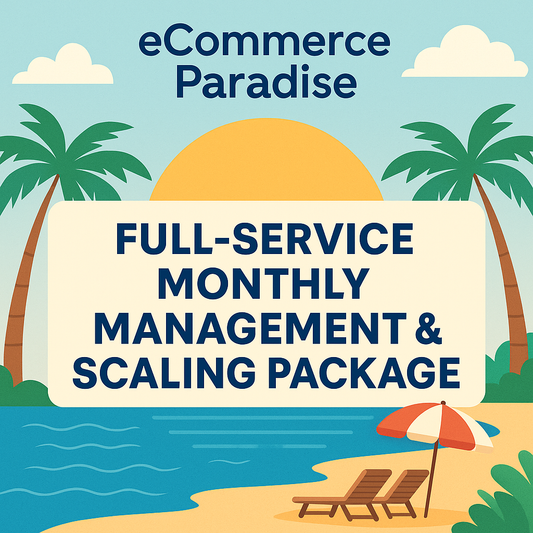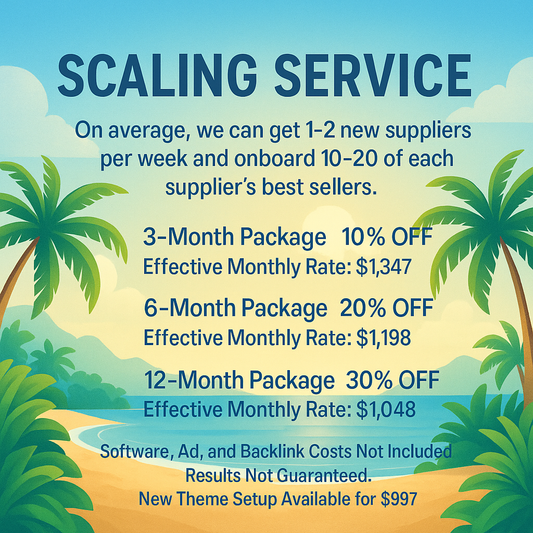
The Key Differences: Ecommerce SEO vs. Traditional SEO
Hey there, ecommerce enthusiasts! Trevor Fenner here from Ecommerce Paradise, and today we're diving deep into an essential topic that should concern every online store owner: the fundamental differences between Ecommerce SEO and Traditional SEO. So, strap in and get ready to elevate your online game!
Understanding the Basics of SEO
Before we jump into the nitty-gritty distinctions, let's clarify what SEO is at its core. SEO, or Search Engine Optimization, is the practice of optimizing your website so that it ranks higher on search engine results pages (SERPs). The ultimate goal? To get more traffic to your site, increase visibility, and, of course, drive sales. But did you know that SEO can differ based on your business model? That leads us to our next point!
The Essence of Ecommerce SEO
Ecommerce SEO is specifically tailored for online retail businesses. When you're running an ecommerce store, there are unique challenges and opportunities that you won’t encounter in traditional SEO. This methodology focuses on optimizing product pages, categories, and entire ecommerce websites. Think product descriptions, high-quality images, and structured data—these are the bread and butter of Ecommerce SEO. Moreover, Google Shopping Ads often come into play, driving even more targeted traffic to your product pages.
Key Elements of Ecommerce SEO
- Product Page Optimization: Every product on your site needs a unique description enriched with relevant keywords. Don't skimp on high-quality images and customer reviews!
- Category Pages: Optimize these pages with keywords that are commonly searched in your niche to capture more traffic.
- Site Architecture: A solid hierarchy helps both users and search engines navigate your site better. Think user-friendly layouts!
- Structured Data: Implement schema markup to enhance how search engines read your product information, helping you stand out in SERPs.
The Nature of Traditional SEO
Now, let’s pivot to Traditional SEO, which is more focused on general websites that aren't necessarily selling products directly. It encompasses everything from blogs to informational websites. The objective is similar – to increase traffic – but the target audience and strategies can significantly differ.
Distinct Features of Traditional SEO
- Content Focus: Traditional SEO places a heavy emphasis on content marketing. Blogs, articles, and informational resources are essential for driving organic traffic.
- Link-Building: This is generally more focused on acquiring backlinks from authoritative sites to improve your site's authority.
- User Engagement: Metrics like bounce rates and time spent on page are critical, as they can signal to search engines whether your content is valuable.
- Keyword Research: While keyword research is also important in ecommerce, traditional SEO often targets broader terms that can lead to more general traffic.
The Primary Differences Explained
Now that we have an understanding of both Ecommerce SEO and Traditional SEO, let's compare them directly. Here are some of the most significant differences:
Target Audience
Ecommerce SEO is heavily focused on converting viewers into customers. It targets users with high purchase intent; they're looking for specific products. In contrast, Traditional SEO often attracts users looking for information or solutions, which doesn’t always lead to a sale. Here, the conversion goal may be to get users to subscribe to a newsletter or read more content.
Content Types
For ecommerce, the content you produce largely revolves around product descriptions, category information, and customer testimonials. Traditional SEO content includes articles, blog posts, videos, and other forms of informative content. While both types of content need to be optimized with relevant keywords, the strategies differ in execution.
Conversion Strategies
In ecommerce, achieving high conversion rates is vital. Strategies include not just SEO but also tactics like Email Marketing and promotions integrated within product pages. On the other hand, Traditional SEO may rely on branding and building trust through high-quality content, which fosters longer-term relationships rather than immediate sales.
SEO Tools: Picking the Right Ones
The tools you choose can also impact how you execute your SEO strategy. Commonly used tools in ecommerce SEO may include:
- Google Merchant Center: A crucial tool for managing your product listings for Google Shopping Ads.
- Ahrefs or SEMrush: Great for keyword research, tracking performance, and competitor analysis.
- Hotjar: Useful for understanding user behavior on your product pages, which can help in optimizing for conversions.
Meanwhile, for Traditional SEO, tools like:
- Google Analytics: Essential for tracking user behavior and engagement on your blog or informational site.
- Yoast SEO: A favorite among bloggers for on-page SEO optimization.
- BuzzSumo: Excellent for discovering trending topics and content ideas.
Overlaps: Where They Converge
Despite their differences, there are areas where Ecommerce SEO and Traditional SEO can overlap:
- Keyword Research: Both require in-depth keyword research to ensure you're targeting the right audience.
- On-page Optimization: Elements like meta titles, descriptions, and header tags are essential in both domains.
- Mobile Optimization: With ecommerce and traditional websites becoming more mobile-friendly, there’s a shared focus on responsive design.
- Analytics Tracking: Continuous monitoring and analysis are critical in both to refine strategies and improve performance.
Building Your Strategy
If you're preparing to enhance your site's SEO—no matter whether you're focusing on ecommerce or traditional methodologies—the first step is to define your goals. Understand your audience and what they are searching for. From there, refine your strategy to leverage the unique aspects of your business model. Here are some actionable tips:
For Ecommerce SEO
- Invest in high-quality visuals for your product listings.
- Use customer reviews as leverage to gain trust and improve SEO.
- Focus on local SEO if you are also selling in brick-and-mortar stores.
For Traditional SEO
- Create valuable content that answers likely questions posed by your audience.
- Incorporate internal and external links to enhance the credibility of your content.
- Experiment with different content formats like video or podcasts to diversify traffic sources.
Seizing the Opportunity: The Future of SEO
The landscape of SEO is ever-evolving, and keeping up with the latest trends can seem daunting. Whether you’re working in the realm of Ecommerce SEO or Traditional SEO, there’s a universal truth: staying updated and continually optimizing your strategy will pay off in the long run. Remember to consider tools like Google Shopping Ads and robust Email Marketing strategies that can effectively support your SEO efforts.
Don’t underestimate the power of a well-integrated SEO strategy. Both Ecommerce and Traditional SEO can thrive when you approach them with the right mindset and tools. Whether you're dropshipping or cultivating a branded experience, the core principles of SEO remain an invaluable asset in your digital toolbox.
So, let's get to work on building your ecommerce empire! Remember, knowledge is power, but action is key. Dive in, experiment, and watch those sales roll in!


















